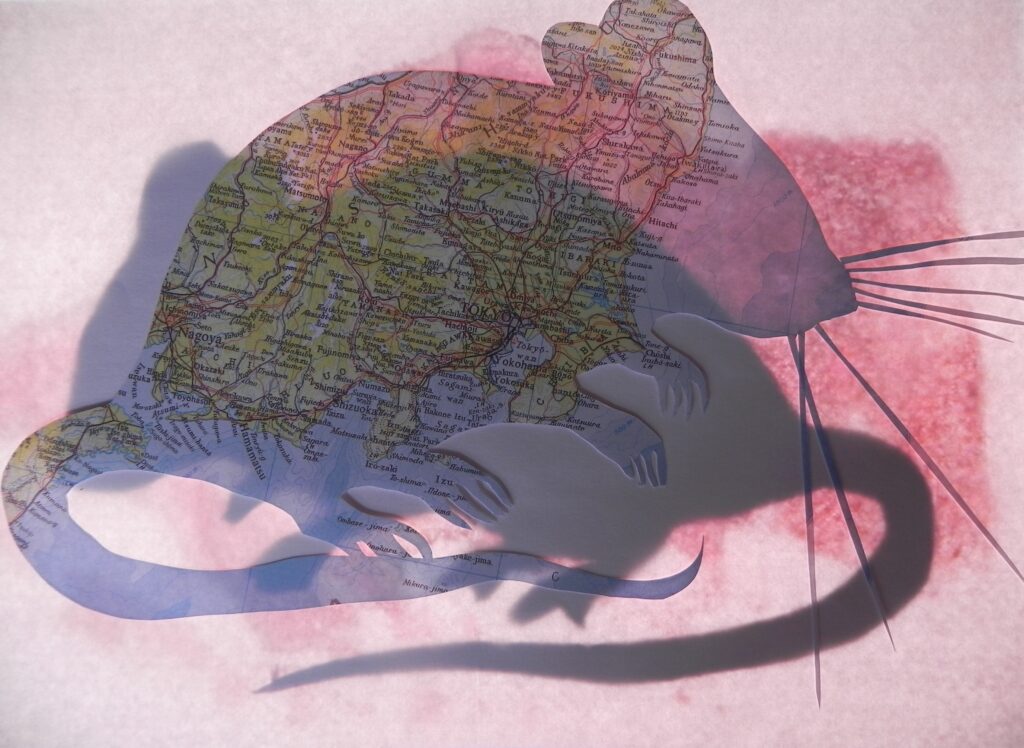
Micespace explores the changing spaces and places occupied by genetically-modified mice in contemporary biomedical research. Mice came to play a central role in biomedical research during the twentieth century, proliferating at the turn of the twenty-first century as researchers sought to add functional understanding to genome maps. International mutant mouse repositories become key sites in developing, characterising, archiving, and distributing new model animals for scientific research. Mice were on the move in different ways, from the internationalisation of science, the changing architectures of the mouse house, to the increasing demands of translational medicine
The images on Micespace emerged from conversations and collaborations between artist Helen Scalway and geographer Gail Davies around how to visualize the emerging complexities, relationalities, and spatialities of biomedical research using mice. These experimental visualisations seek to show some of structures of thinking, spaces of working, and ways of ‘being mice’ in the biosciences. The images offer different ways of apprehending the complexities of what is brought together in other, more ordered, archives of animals used in research.



Micespace is a provocative, messy, and speculative collection, inviting reflection and hesitation around what the conventional curation of scientific data may elide, miss out, or skip over: incommensurable logics, unanswerable conundrums, and aporias in meaning. Our collaboration ran from around 2010 to 2020. This website has been constructed as our own mutated mouse repository: it is offered both as an ‘anti-archive’ to house our ‘State of Art Repository’ and a positive opening to continue to think about what I means to work in and with Micespace
